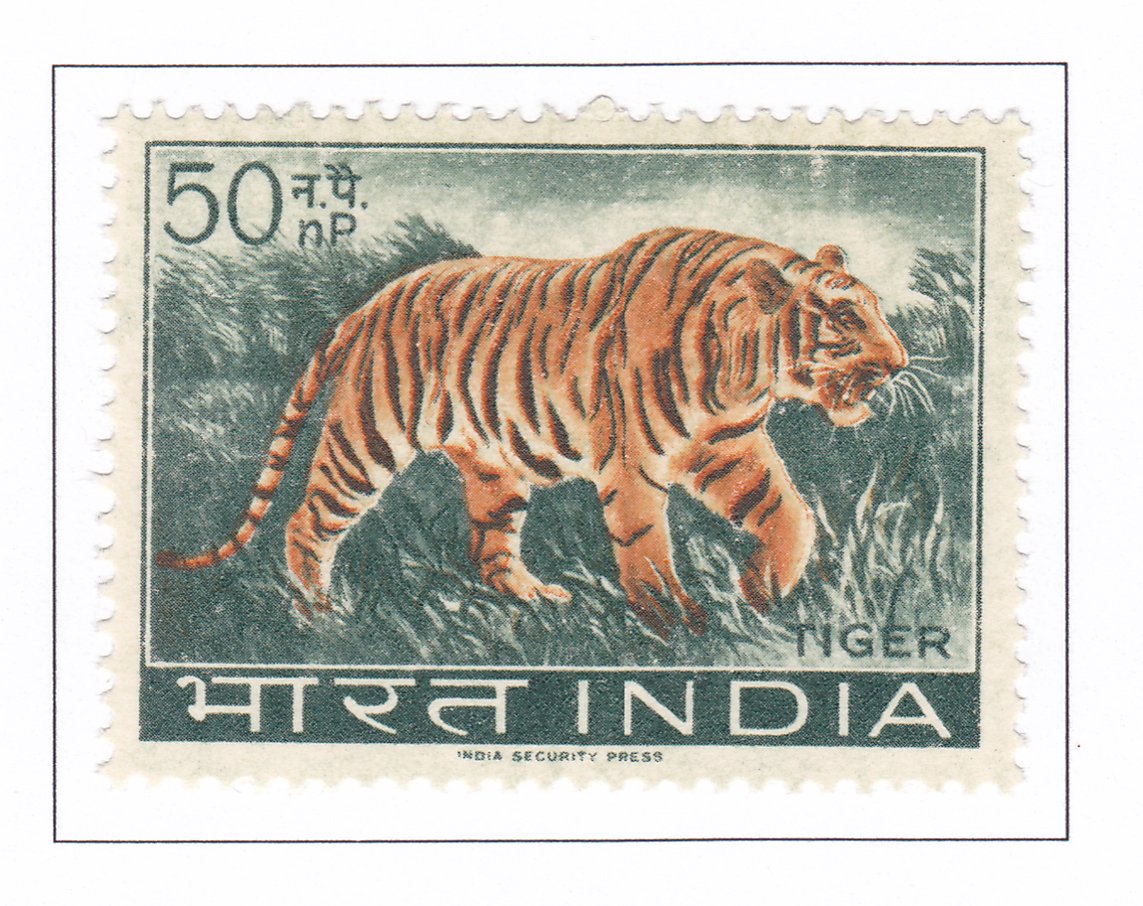Tiger (Panthera tigris)

Technical Data
| Stamp Set | Wild Life Presevation |
|---|---|
| Date of Issue | October 7, 1963 |
| Denomination | 50 np |
| Quantity | 4,000,000 |
| Perforation | comb 13 |
| Printer | Security Printing Press, Nashik |
| Watermark | Asokan Capital Multiple [Up] |
| Colors | Dark green | Orange |
| Catalog Codes |
Michel IN 361 Stamp Number IN 365 Yvert et Tellier IN 151 Stanley Gibbons IN 475 |
| Themes | Animals (Fauna) | Mammals | Tigers | Wild Cats |
The Tiger (Panthera tigris) is an awe-inspiring creature, particularly when observed in its natural habitat amidst dense jungle foliage. Widely distributed across most parts of India, except the extreme northwest and higher Himalayan regions, tigers continue to thrive despite the challenges posed by human population growth and habitat encroachment.
While tigers primarily prey on deer and wild pigs, the scarcity of natural food sources sometimes drives them to target domestic cattle. Instances of tigers becoming man-eaters are rare, usually occurring due to old age or disability. Wounded tigers or tigresses protecting their cubs can pose a significant threat, but in general, tigers tend to avoid human contact by stealthily keeping their distance in the forest.
Occasionally, “white” tigers are spotted, particularly in areas like the old princely state of Rewa, where they are usually partial albinos—nature’s rare anomaly. In contrast, there are no documented cases of black tigers, although black leopards are relatively common in parts of south and northeast India.
Traditionally, tigers have been targeted by hunters, who would drive them out of thick jungle using beaters or tame elephants, or ambush them near prey. However, as tigers face increasing threats to their survival, there is a growing trend towards photographing them in protected areas like Corbett National Park rather than hunting them. This shift reflects a broader recognition of the need to conserve these magnificent creatures for future generations.
